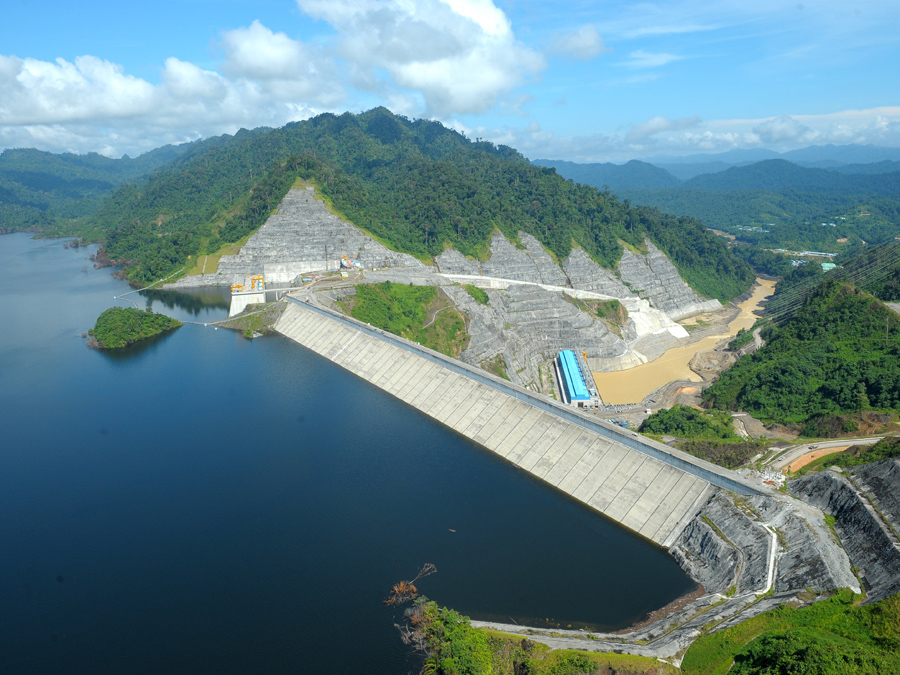The U.S. Energy Information Administration (EIA) recently released a report stating that since the summer of this year, extreme dry weather has swept the United States, causing hydropower generation in many parts of the country to decline for several consecutive months. There is a shortage of electricity in the state, and the regional grid is under great pressure.
Hydroelectric power generation declines for months
EIA pointed out that extreme and abnormal dry weather has affected most parts of the western United States, especially many states in the Pacific Northwest. These states are where most of the US hydropower installed capacity is located. It is expected that this will lead to a year-on-year decline in hydropower generation in the United States this year. 14%.
It is understood that in the five states of Washington, Idaho, Vermont, Oregon and South Dakota, at least half of the electricity in each state comes from hydropower. In August last year, California, which owns 13% of the US’s installed hydropower capacity, was forced to close the Edward Hyatt hydropower station after the water level of Lake Oroville fell to a historical low. Thousands of households provide sufficient electricity. As of November last year, California’s hydropower capacity had fallen to a 10-year low.
The Hoover Dam, the main source of electricity consumption in western states, set the lowest water level since its completion this summer, and its power generation has fallen by 25% so far this year.
In addition, the water level of Lake Powell on the border between Arizona and Utah is also continuing to drop. EIA predicts that this will lead to a 3% probability that the Glen Canyon Dam will not be able to generate electricity sometime next year, and a 34% probability that it will not be able to generate electricity in 2023.The pressure on the regional power grid increases sharply
The sudden drop in hydropower generation has put tremendous pressure on the operation of the US regional power grid. The current U.S. grid system is mainly composed of three major combined power grids in the east, west, and southern Texas. These three combined power grids are connected by only a few low-capacity DC lines, accounting for 73% and 19% of the electricity sold in the United States, respectively. And 8%.
Among them, the eastern power grid is close to the major coal and gas supply areas in the United States, and mainly uses coal and natural gas for power generation; the western power grid is close to the Colorado mountains and rivers, and is distributed with rocky mountains and other mountains with great terrain, mainly hydropower. Main; the southern Texas power grid is located in the shale gas basin, and natural gas power generation is the dominant one, forming an independent small power grid in the region.
US media CNBC pointed out that the western power grid, which mainly relies on hydropower, has further increased its operating load. Some experts pointed out that the Western Power Grid urgently needs to face the future of a sudden drop in hydropower.
EIA data shows that hydropower ranks fifth in the U.S. power structure, and its share has dropped from 7.25% last year to 6.85%. In the first half of this year, hydroelectric power generation in the United States fell 12.6% year-on-year.
Hydropower is still essential
“The biggest challenge we face is to find a suitable resource or combination of resources to provide energy and power output capacity equivalent to hydropower.” California Energy Commission spokesperson Lindsay Buckley said, “As climate change leads to more extreme weather With increasing frequency, grid operators have to speed up to adapt to the huge fluctuations in hydroelectric power generation.”
EIA pointed out that hydropower is a relatively flexible renewable energy with strong load tracking and regulation performance, and can be easily switched on and off. Therefore, it can work well with intermittent wind and wind power. During the period, hydropower can greatly alleviate the complexity of grid operations. This means that hydropower is still indispensable for the United States.
Severin Borenstein, a renewable energy expert at the University of California at Berkeley and a member of the board of directors of California independent power system operators, said: “Hydropower is an important part of the entire power system’s collaborative work, and its role positioning is very important.”
It is reported that at present, the sudden drop in hydropower generation has forced public utility companies and state grid operators in many western states of the United States to seek other sources of power generation, such as fossil fuels, nuclear power, and wind and solar power. “This indirectly leads to higher operating costs for utilities.” Nathalie Voisin, a Los Angeles water resource engineer, said frankly. “Hydropower was originally very reliable, but the current situation forces us to find a solution as soon as possible.”
Post time: Oct-22-2021

